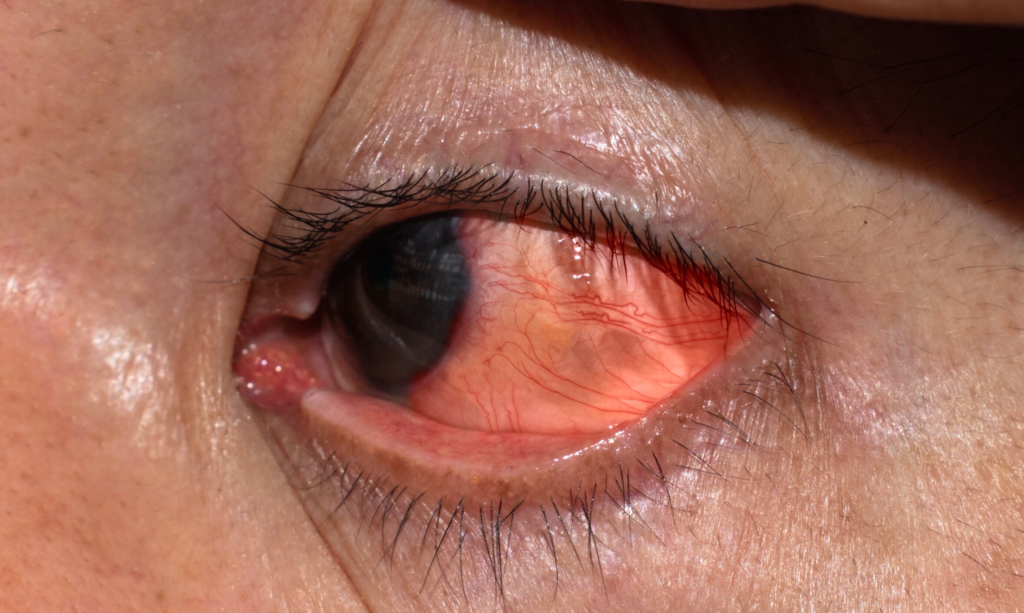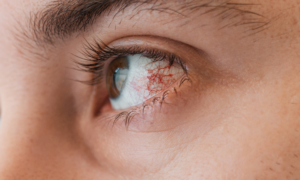
Corneal Infection Treatment in Dhule
Receive specialized Corneal Infection Treatment at Shri Ramchandra Netralaya, Dhule's leading eye care facility. Depend on us for expert care and superior outcomes.
- Comprehensive Eye Care Services
- Experienced Eye Care Specialists
- Utilizing Cutting-Edge Technology

Normal Eye

Eye with Corneal Infection
What are corneal infections?
Corneal infections, or cornea eye infections, are medical conditions affecting the cornea, the clear, dome-shaped surface at the front of the eye. These infections can be caused by bacteria, viruses, fungi, or parasites and often result from injury or contact lens wear.
Symptoms include redness, pain, blurred vision, sensitivity to light, and discharge. Prompt treatment is crucial to prevent vision impairment or permanent damage to the eye.
Corneal Infection Treatment typically involves antibiotic, antifungal, or antiviral medications, depending on the cause.
What are the signs of cornea eye infections?
-
Redness in the eye
-
Eye pain or discomfort
-
Blurred or reduced vision
-
Sensitivity to light
-
Watery or excessive tearing
-
Discharge from the eye
-
Swelling of the eyelids


Book Your Appointment at Shri Ramchandra Netralaya!
What Causes Corneal Infections?
-
Bacterial Contamination: Primary cause, poor hygiene with contact lenses, leading to bacterial growth.
-
Viral Infections: Common factor, herpes simplex virus affects the cornea, causing inflammation and discomfort.
-
Fungal Infections: Environmental source, exposure to organic material like soil or plants, introduces fungi.
-
Parasitic Infections: Associated with water, Acanthamoeba from contaminated water affecting contact lens users.
-
Corneal Injury: Direct cause, physical trauma to the eye allows pathogens to penetrate.
-
Reduced Immunity: Risk factor, weakened immune systems more susceptible to infections.

How is cornea eye infection treated?
Corneal infection treatment typically involves using antibiotic eye drops or ointments to eliminate the infection. In more severe cases, oral antibiotics may be prescribed. If the infection persists or causes significant damage to the cornea, additional treatments such as corneal debridement (removal of infected tissue) or surgery may be necessary.
During Corneal Infection Treatment, the infected area of the cornea may be removed and replaced with healthy tissue from a donor (corneal transplant). It’s important to seek prompt treatment for corneal infections to prevent vision loss and other complications.
Instructions for eye patients after Corneal Infection Treatment:
- Do not rub the treated eye.
- While bathing, pour water below the neck for four weeks, not on the head.
- Do not allow water to enter the eyes; wipe the face clean with a wet cloth.
- Do not sleep on the side of the treated eye for at least two weeks.
- Wear dark glasses for a month to avoid strong light and dust.
- With a clean soft cloth or handkerchief, gently dab the water coming from the eye only after it reaches the cheek, do not put pressure on the eye.
- If the eye becomes very painful or red, see a doctor immediately.
- Do not lift heavy objects or cough strenuously.
- Keep small children away to avoid accidental contact or injury while they play.
- Twice a day, soak cotton in hot water, squeeze it, and then clean the eyes from outside.
- Take your usual tablets for high blood pressure, diabetes, asthma, heart disease, and other conditions as prescribed.
- Take a light diet for 2 days after operation, and avoid solid foods that are hard to chew.
- Patients can walk in the open environment but should avoid crowded places.
- Hands should be washed and wiped before instilling eye drops. Drops should be applied by gently pulling the lower eyelid.
- Apply the eye drops as directed and keep the eye closed for five minutes.
- Do not use a pin/ needle to open a new drop. It should be opened as directed, leaving a gap of 15 to 20 minutes between two drops.
- Avoid watching TV, reading, computer, and cooking for at least 8 days.
- Follow up as advised by the consultant.
- The glasses will be prescribed after a month.
- If the blood thinning pill is stopped before the operation, start it on the second day after the treatment.
Book Your Appointment Now!
Opening Hours
- Monday - 9:00 am - 9:00 pm
- Tuesday - 9:00 am - 9:00 pm
- Wednesday - 9:00 am - 9:00 pm
- Thursday - 9:00 am - 9:00 pm
- Friday - 9:00 am - 9:00 pm
- Saturday - 9:00 am - 9:00 pm
- Sunday - 9:00 am - 12:00 pm
Instructions for Eye Patients After Treatment:
- Do not rub the treated eye.
- While bathing, pour water below the neck for four weeks, not on the head.
- Do not allow water to enter the eyes; wipe the face clean with a wet cloth.
- Do not sleep on the side of the treated eye for at least two weeks.
- Wear dark glasses for a month to avoid strong light and dust.
- With a clean soft cloth or handkerchief, gently dab the water coming from the eye only after it reaches the cheek, do not put pressure on the eye.
- If the eye becomes very painful or red, see a doctor immediately.
- Do not lift heavy objects or cough strenuously.
- Keep small children away to avoid accidental contact or injury while they play.
- Twice a day, soak cotton in hot water, squeeze it, and then clean the eyes from outside.
- Take your usual tablets for high blood pressure, diabetes, asthma, heart disease, and other conditions as prescribed.
- Take a light diet for 2 days after treatment, and avoid solid foods that are hard to chew.
- Patients can walk in the open environment but should avoid crowded places.
- Hands should be washed and wiped before instilling eye drops. Drops should be applied by gently pulling the lower eyelid.
- Apply the eye drops as directed and keep the eye closed for five minutes.
- Do not use a pin/ needle to open a new drop. It should be opened as directed, leaving a gap of 15 to 20 minutes between two drops.
- Avoid watching TV, reading, computer, and cooking for at least 8 days.
- Follow up as advised by the consultant.
- The glasses will be prescribed after a month.
- If the blood thinning pill is stopped before the treatment, start it on the second day after the treatment.

